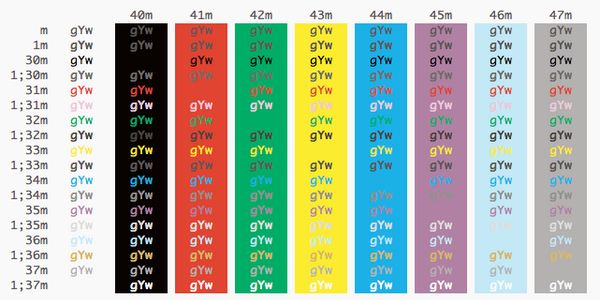

Place these fonts in the ~/Library/Fonts. I also use theįont for some stuff… you can get those from the download folder at the end of this post. , is used to implement the arrows and git branch icons.
#ITERM2 COLOR INSTALL#
Using Homebrew, you install it using cask ( an addon for Homebrew) so first install cask, then iTerm2: , installing & configuring a few other apps that aren’t supported in Homebrew.įirst, install ZSH and ZSH completions using Homebrew:įinally, install iTerm2. I use it to script my MacOS install to about 90% Homebrew is a way to manage your MacOS installs using scripts and the command line. If you aren’t using Homebrew, consider adopting it. This is easy… especially if you are using The first step is to get Oh My ZSH and iTerm installed. After getting these setup, I then apply a custom theme and add a few customizations to make my prompt just perfect. Is the MacOS Terminal replacement, also community backed, that is very configurable. , a community-driven framework for managing the config of the popular For me (and most people), it’s too basic. It is very basic just like you’d expect as an OS included tool. MacOS includes a default command prompt… that is Terminal. The closest configurable command prompt I would recommend is Oh, before I go too far if you’re a Windows person, this isn’t for you. This post includes some of what I learned from his post as well as my own tweaks. The end of this post includes a form where you can download a script & the resources needed to make your prompt look like this. current git branch name & status (if in a git repo).current version of Node.js (if you are using NVM).There are a few key points about this prompt:
#ITERM2 COLOR HOW TO#
This post will show you how to configure your command prompt to look like this: I get this question a lot when sharing screenshots or doing a presentation and wanted a resource to point people to. In this week’s post I want to share how I set up my terminal on my laptop. My last post I explained why I like using NVM to not only facilitate but manage multiple Node.js installations I am working on a series of posts that aren’t specific to the SharePoint Framework but are tangentially related to the development experience. In spending time with and talking to developers making this jump, I’m finding they are interested in some of the tools and things I use. This style of development leverages popular open source tools built on Node.js and developers more time in the terminal/console than they are used to.

Many if not most traditional SharePoint developers are new to the dev stack and build tool chain Microsoft selected for SharePoint Framework development.


 0 kommentar(er)
0 kommentar(er)
